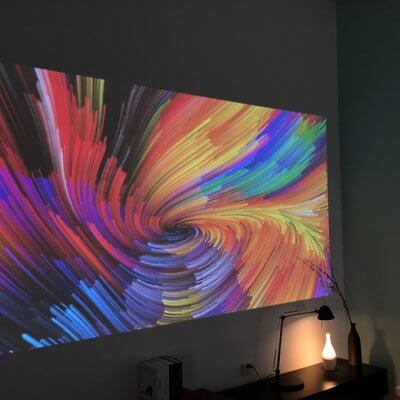Projectors can be classified into 6 types based on their use scenarios. This post lists the 6 common projector types and describes their features.
Home Projector
Home projectors feature a brightness of about 2,000 ANSI lumens. The aspect ratio of these projectors is 16:9. The image standard resolution of these projectors may be 720P or 1080P. Some high-end projectors support 4K.

This kind of projector has various ports, suitable for playing movies and high-definition TV, suitable for home users.
Business projector
Generally, the configuration of a business projector is high.

This kind of projector is just like a portable tablet computer, which features good system configuration including chips and memory, wireless connection, quality audio output, smart features, 3D, screen mirroring, and other features.
Education Conference Projector
Education conference projectors are wildly seen in schools and enterprise applications. These projectors usually are fixed. They feature the mainstream resolution, a brightness ranging from 2000-3000 ANSI lumens, and moderate weight.

These projectors perform well in heat dissipation and dustproof. They also have rich functional interfaces.
Engineering projector
Compared with mainstream projectors, engineering projectors can project a larger image. They feature farther distance and high brightness. They also support multi-bulb mode that can better cope with the large and changeable installation environments.
They are suitable for education, media and government, and other fields.
Professional Theater Projector
This kind of projector pays more attention to stability, emphasizes low failure rate, and good heat dissipation performance. They must be easy to use.

The most important feature of this kind of projector is high brightness. Their brightness is generally up to 5000 lumens, more than 10000 lumens.
Measuring Projector
This kind of projector is mainly used to measure some products. They are just like a testing instrument.
These projectors get the enlarged image of product parts by means of the transmission of light and then use a standard film or grating ruler to determine the size of the product. Due to the development of industrialization, this kind of measuring projector has become one of the most commonly used testing instruments in the manufacturing industry.




